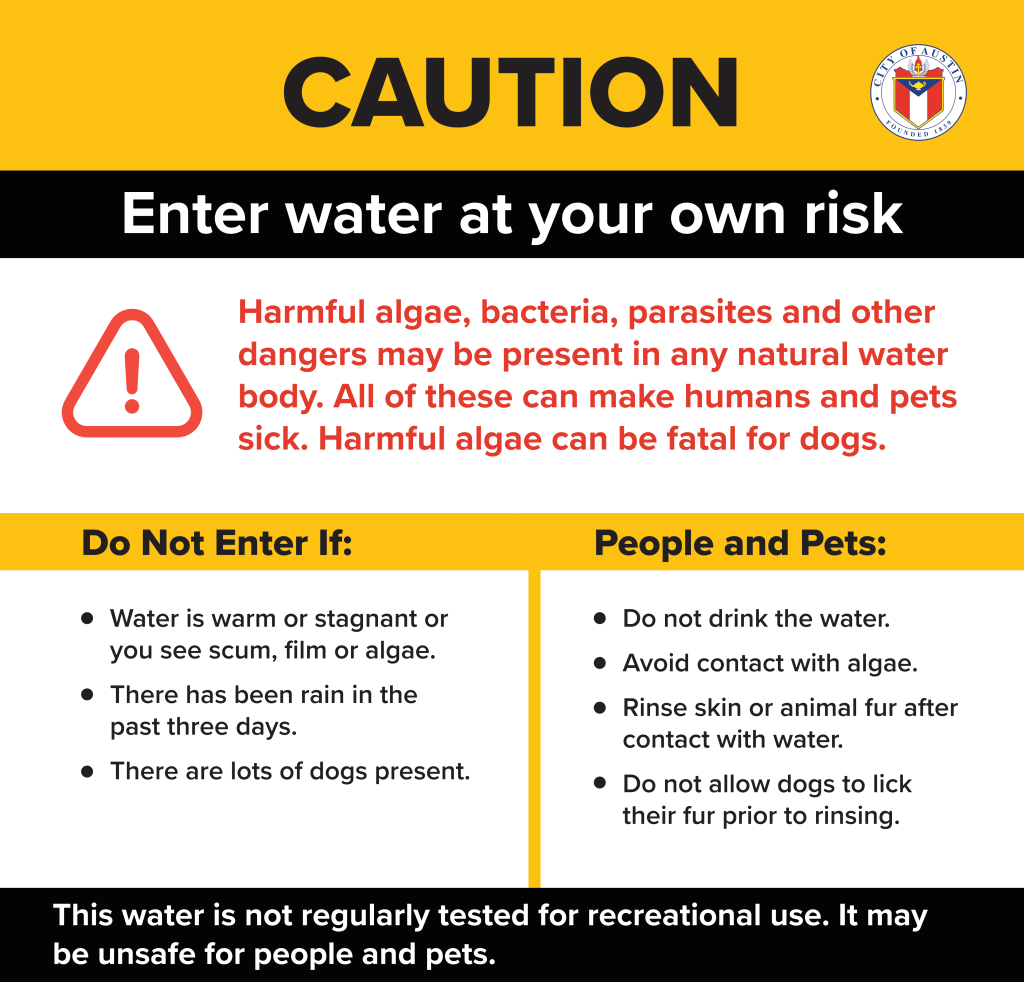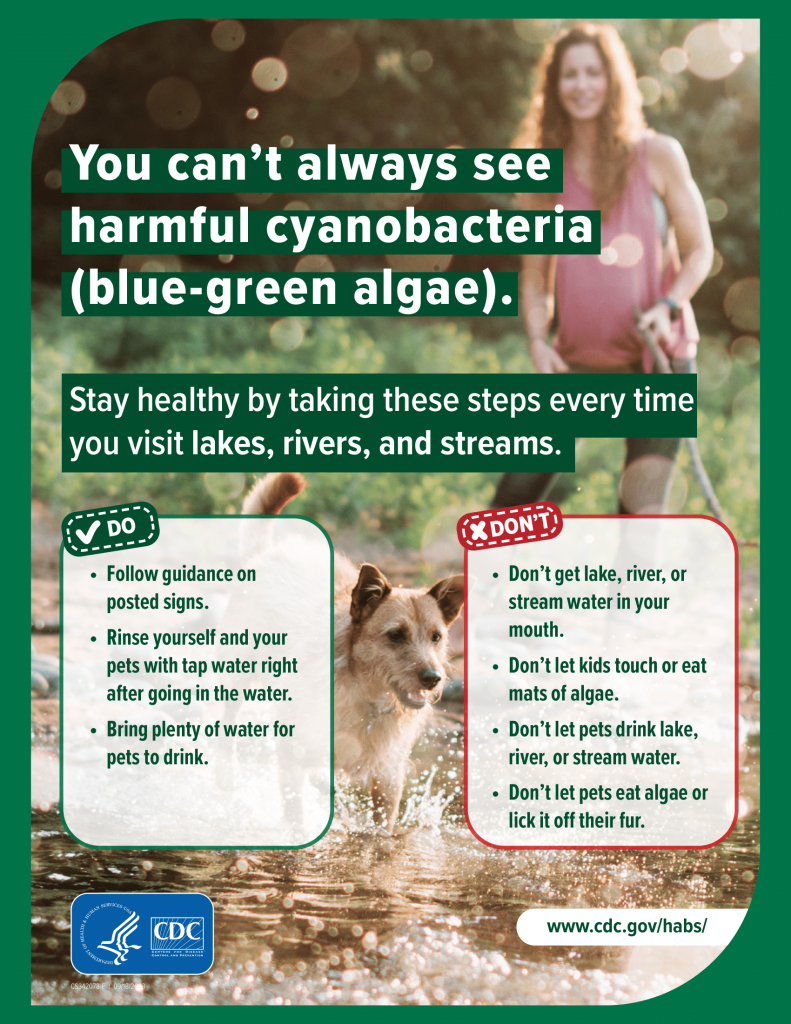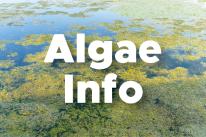Symptoms and Reporting Suspected Illness
If you, a family member or pet have sudden, unexplained symptoms after swimming, contact your medical provider, veterinarian or the Texas Poison Control Center at 1-800-222-1222. Please also let us know by completing our form:
- Harmful Algal Suspected Illness Reporting Form
- Formulario de Reporte por Sospecha de Enfermedad por Proliferación de Algas Dañinas

Caution: Enter Water at Your Own Risk
There is always some level of risk in a natural water body. In addition to algae, bacteria, parasites and other dangers may be present.
People and Pets
- Do not drink water directly from natural water bodies.
- Avoid contact with algae.
- Rinse skin or animal fur after contact with water.
- Do not allow dogs to lick their fur prior to rinsing.
Do Not Enter Water a Natural Water Body If:
- Water is warm or stagnant or you see scum, film or algae.
- There has been rain in the past three days.
- There are lots of dogs present.
Note that people are not allowed to swim in Lady Bird Lake (Ord. 640611-C).
Resources for physicians
- CDC Cyanobacterial Blooms: Information for Healthcare Providers
- Association of State and Territorial Health Officials Cyanobacterial Blooms and Associated Illnesses A Clinician Toolbox for Physicians and Healthcare Providers: Cyanobacterial Blooms and Associated Illnesses
Resources for veterinarians
You can find information on symptoms on the Centers for Disease Control and Prevention's website, Illness and Symptoms: Cyanobacteria in Fresh Water.
Toxins and Previous Results
Austin Watershed Protection tests algae and water for toxins. See their testing results here.





